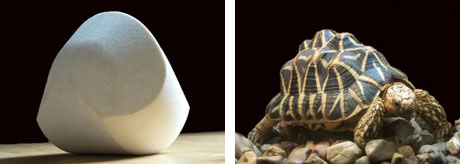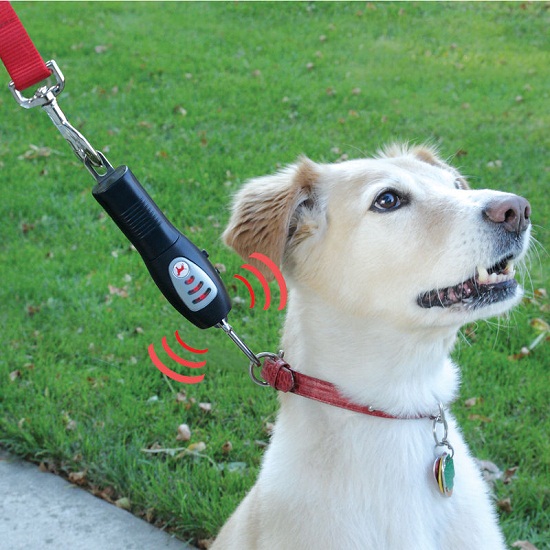
By Evan Ackerman
You don’t think about it much, but generally, when stuff falls over, it doesn’t get back up. Off the top of my head, I can think of two exceptions to the rule: Weebles, and turtles. Of course, Weebles (and most other self-righting objects) cheat by having a weight in the bottom. The Gomboc, “invented” last December by Gábor Domokos and Péter Várkonyi, is the first convex, homogeneous object with only one stable orientation, which means that it’ll always turn itself “up” no matter which way you set it down, without any help:
Turtles, though, seem to have had this figured out a while ago… Quite a few of them have shells shaped nearly identically to the Gomboc. As for practical uses for those of us who aren’t turtles, I honestly don’t know what this is good for. How about a cake mold, to make self-righting pineapple upside-down cake? Yeah, okay, got nothin’. It’s definitely cool, though.
If you want to order one, they’re available in a limited edition starting at about 1000 euros. Or you could just go find a turtle somewhere.





Maybe make some sort of car or off road cage? That way if you fall over you’ll just end up on your wheels again.
This is competely silly. A sphere with the center of gravity offset is self-righting. There is no difficulty whatsoever in making an object self-righting. These guys claim that their design is different from that in some deep conceptual
way… but don’t say why or how.
It’s meaningless to say “well, this doesn’t have a weight in the bottom.” It most certainly has weight, it most certainly has a center of gravity somewhere, and that center of gravity by the definition of static stability is at the lowest point when it’s in its “upright” position.
Bottom line: Yeah, so what.
The point is that it’s homogeneous, and the center of gravity is at the center of the object. You can easily have objects that are stable when their centers of gravity are low (or high, for that matter), but this is the first shape that does not rely on an offset center of gravity to have one single stable orientation. They do talk about it more if you read some of their site.
If the object is a sphere, then the phrase “the center of gravity is at the center of the object” has a well-defined meaning. If the object is not a sphere, this phrase means little or nothing.
If homogeneity is a concern, drill a hole off-center through a sphere.
Bullshit it “doesn’t rely on an offset center of gravity” to be stable. The definition of static stability requires the center of gravity to be lower in that position than in any other. (Because if it weren’t, then another position would have a lower center of gravity, and by conservation of energy, could not move to the nominally “stable” position without external energy) Thus, in that position the center of gravity is offset low. By definition. No way of getting around that.
Leave those poor turtles alone.
Don’t worry, soon the market will be flooded with cheap rip-off products. This technology must not remain restricted to the elite! The lower classes will fight for their equal rights, to be able to afford these things and to use them… and do… er… something… with them.
…Okay, got nothing either. Apart from being a science toy, it’s as useless as a rock. 🙂 As a hands-on representation of a pure geometrical-mathematical concept, quite intriguing though.
I’m getting out of my depth here (as I may have been when talking about the center of gravity of the object), so I’m just going to c&p from their website: “The ‘Gömböc’ is the first known homogenous object with one stable and one unstable equilibrium point.” So, yes, a non-homogenous sphere is self-righting, but that’s something different from what was trying to be accomplished here. Also implied when talking about “self-righting” is that there is one single stable equilibrium point (“up”), and no other stable equilibrium points, which is why it’s useful for turtles who don’t like being upside-down. More c&p: “Convexity and homogeneity are crucial properties of Gömböc. Weebles are straightforward examples of inhomogenous objects with Gömböc-type behaviour. Similarly, it is easy to create homogenous but concave Gömböc-like forms due to the fact that concave bodies cannot roll on all points of their circumference. Shapes with a unique stable equilibrium are called monostatic; those with only one additional unstable point are referred to as mono-monostatic. Thus the Gömböc is the first convex, homogenous, mono-monostatic object.” I think the point that they’re making is that it’s the first object to rely on shape itself to self-right. Again, I’d encourage you to check out their website: http://www.gomboc.eu/site.php?inc=0&menuId=8
BTW, Anonymous, the one of guys that invented this tested out 2,000 beach pebbles for self-righting properties (while on his honeymoon, no less) and none of them did. Changing this shape by a mere 5% results in 16 stable equilibrium points as opposed to 1, so it’s unlikely to be generated spontaneously. Just by turtles. 🙂
Ah, I see the point I missed– it is not merely self-righting, but convex as well as homogenous. It’s easy to make a self-righting object that’s homogenous but not convex… it’s easy to make one that’s convex but not homogenous… but all three at once? OK, I see that it’s indeed nontrivial.
Pretty cool. Doubtful there are any useful uses, though. Of course, as soon as you make ‘something’ that shape, the various materials will upset the weight distribution. And I assume the surface would need to be ‘true’ for the gidget to work perfectly. I want to see a really really big one. 🙂
Maybe a use would be a boat design or a amusement park ride? No, maybe the boat is better….